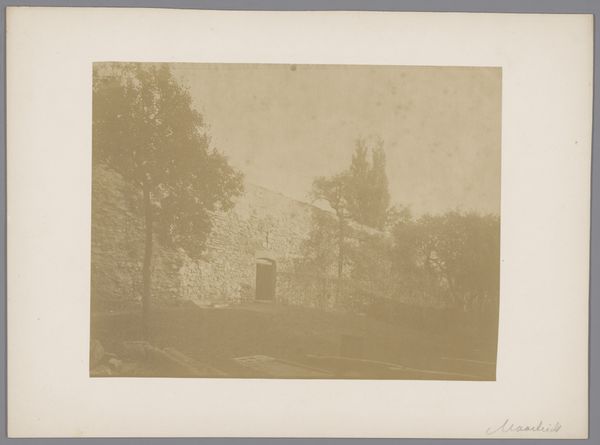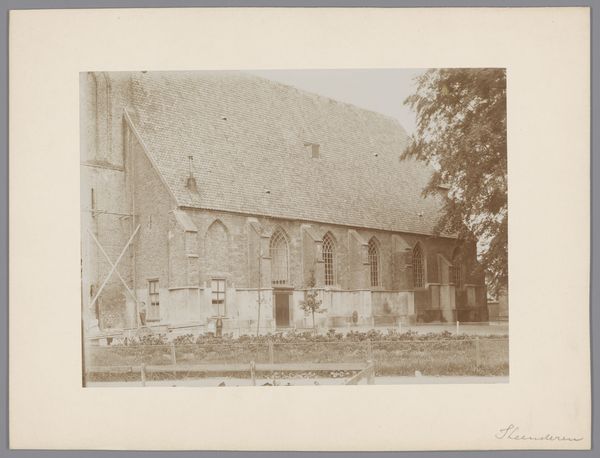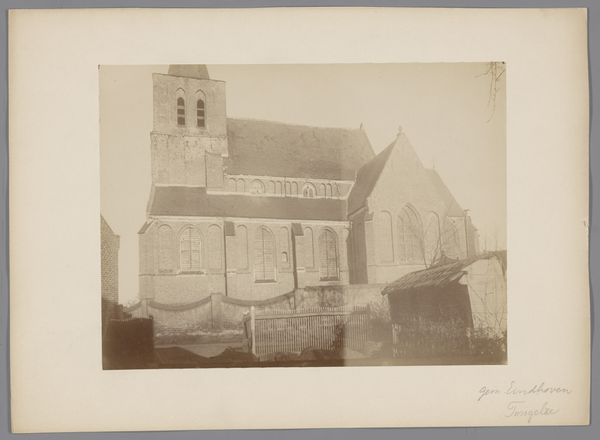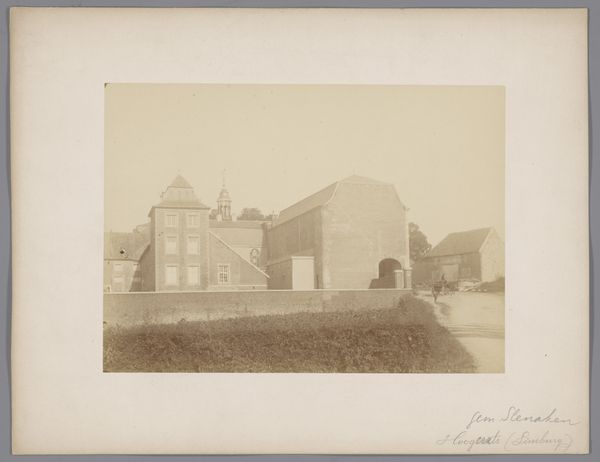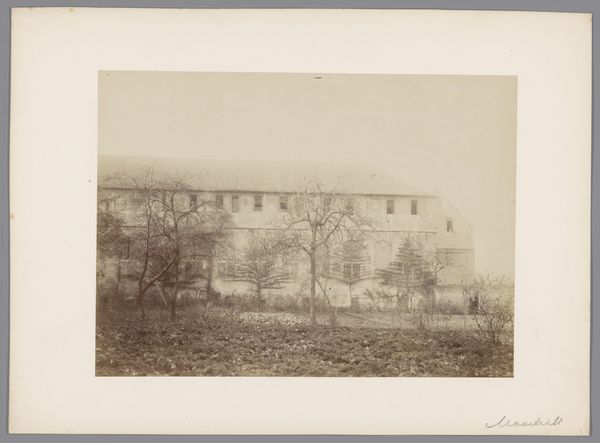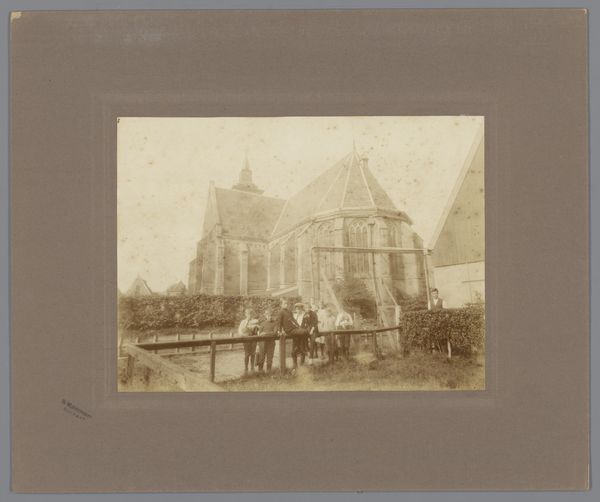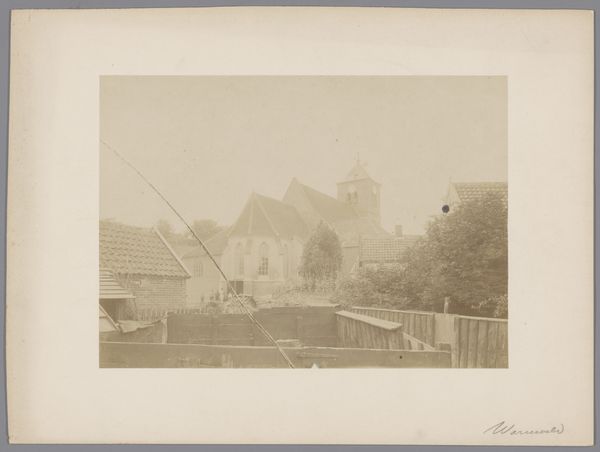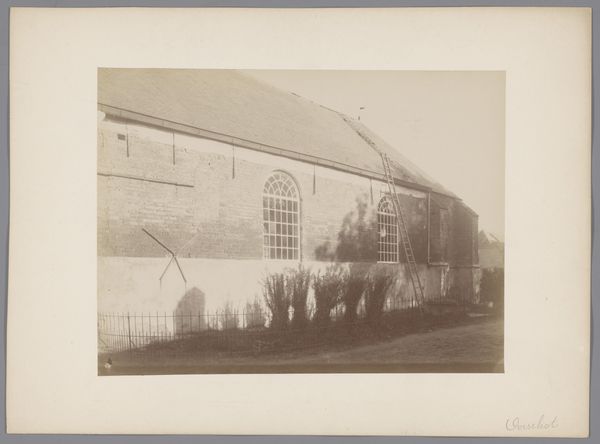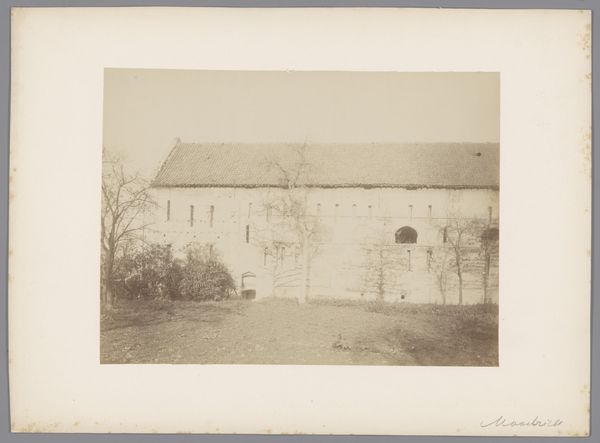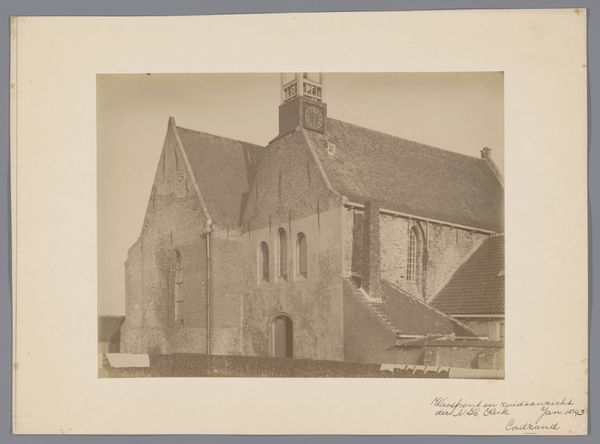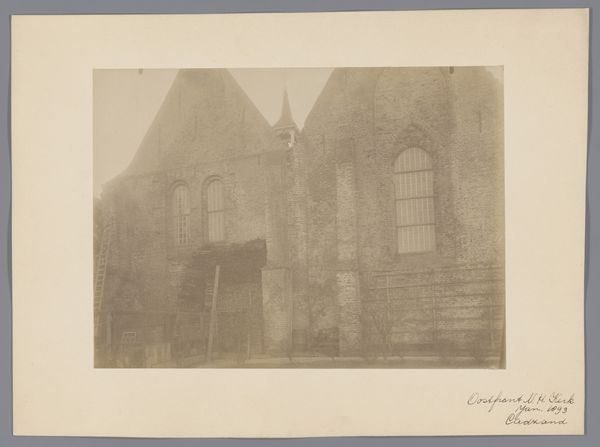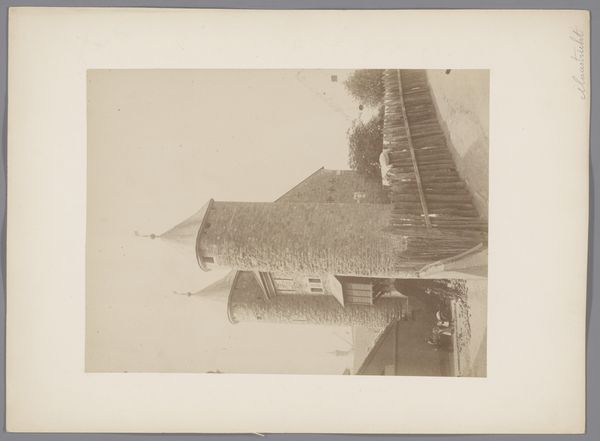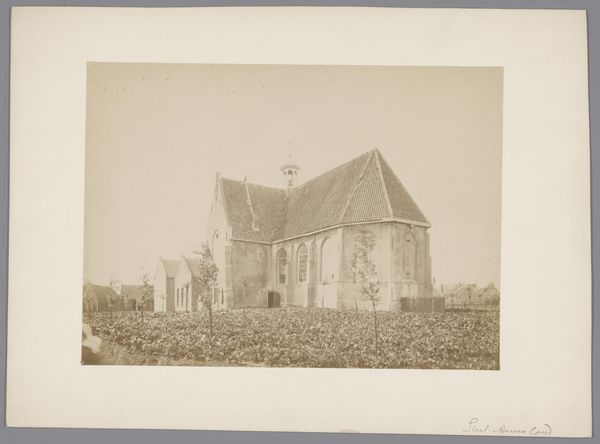
Dimensions: height 167 mm, width 228 mm
Copyright: Rijks Museum: Open Domain
Editor: So, we're looking at "View of the Old Beyart Monastery in Maastricht," circa 1893, and attributed to anonymous Monumentenzorg. It's this ghostly, monochromatic photograph... Almost feels like looking at a faded memory. What strikes me most is how solid the architecture seems compared to the surrounding blurry greenery. What’s your perspective on this, given your expertise? Curator: What's compelling here is understanding photography's democratizing impact on art. Before its wide adoption, images of architecture were mainly available to those commissioning paintings or engravings. The process of mass-producing these images via photography drastically changed not just the cost but also the accessibility of architectural images to average consumers. Do you see how that impacts our understanding? Editor: I guess so... Like suddenly a wider public can consume this view? Curator: Precisely! How did photography then reshape not only aesthetic considerations but also societal attitudes regarding who owned and who had the right to create art depicting labor and materials, especially since architecture relied upon many workers during its conception and completion? Editor: It's fascinating to think about. Did photography, as a medium itself, impact the construction industry by bringing attention to architectural styles that ordinary folks didn't even know existed, perhaps inciting inspiration? Curator: That’s precisely where the revolution occurred: as technologies developed and accessibility to goods or information began circulating to common consumers, their creative imagination broadened – shifting entire cultures towards mass construction based on these accessible materials for all parties involved–leading eventually towards industrialized capitalism alongside photography! What would you say? Editor: That's so helpful, considering the historical context in photography, not just art! I'll be sure to examine material accessibility further when analyzing this piece again. Thank you. Curator: Absolutely! Keep questioning the production and labor connected to any artwork!
Comments
No comments
Be the first to comment and join the conversation on the ultimate creative platform.
